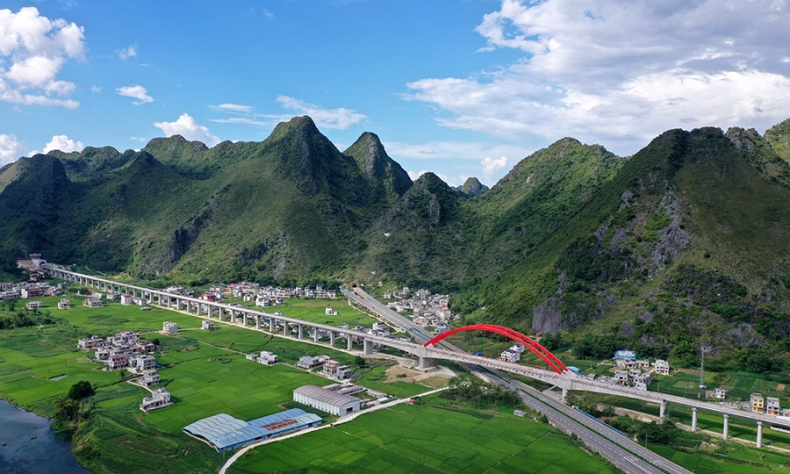The March for Modernization

If the move from poverty reduction to vitalization is secured during the five years ahead, this will plug the biggest loopholes in China’s overall drive for development.
The Central Government’s No.1 Document for 2021 saw its publication on February 21, showcasing a general dedication to accelerating the vitalization of the rural areas and the modernization of agriculture and rural areas. The new paper marks a turning point in China’s agricultural development as well as boosts the improvement of the farmer community’s livelihood.
The blueprint, following the nation’s vast rural regions’ entry into a moderately prosperous society, intends to jumpstart China’s new march toward the modernization of its agriculture and rural areas.
One of the Two Centenary Goals of the Communist Party of China is to turn China into a modern socialist country with Chinese characteristics that is prosperous, strong, democratic, culturally advanced, harmonious and beautiful. By the time the People’s Republic of China celebrates its 100th anniversary in 2049, the Party anticipates China will reach the inclusive level of moderately developed countries. Agriculture and the modernization of the country’s rural areas are crucial pillars supporting this complete modernization.
As the document points out, 2021 should mark a solid foundation for the cause of modernizing agriculture and the rural areas by and large. As for the former, the quintessential undertaking is to resolve those problems related to seeds and arable land, increase the use of modern agricultural technologies, develop modern rural industrial systems and modern agricultural operation system, and promote green agriculture.
Tackling the topic of upgrading the countryside at large, the vital requirements include the implementation of major strategies regarding the rural living environment, rural infrastructure, as well as public services.
At its very core, the modernization of China’s agriculture and rural areas emphasizes the vitalization of rural areas, as this relates to grain production, the construction of rural public facilities, plus the cultural atmosphere across the rural areas, forging the very base for prosperous and civilized life in the rural areas.
From the late 1970s onward, the Chinese people have gradually become more affluent in terms of food and clothing supplies, with absolute poverty eradicated across the country in 2020. In this context, it is necessary to shift the spotlight of both the government and the Party’s efforts onto the vitalization of rural areas, resulting in the decision to embark on a new journey of modernizing the country’s agricultural existence.
Food security makes up both the basis as well as the target of China’s agricultural transformation, as this always has been and always will be a major issue when dealing with a population of this magnitude. China has witnessed one bumper harvest after another in recent years, with its grain production hitting 669.5 billion kg in 2020, up by more than 5 billion kg over the previous year. Despite the impact of the COVID-19 epidemic, China’s supply of grain, and other essential agricultural products remained sufficient.
Nevertheless, though food security in itself may not be a top-ranking concern for China, the country still lags far behind various advanced countries in this regard. The yield per unit of beans and corn in China is less than 60 percent of that in the United States. If farmers can gain additional access to better seeds and more advanced agricultural technologies, China’s farming industry will surely be able to get a few steps closer to full-fledged modernization.
Modernizing China’s agriculture and its rural areas currently does not have too many existing resources to depend on, let alone build on. Although absolute poverty has been eliminated, the possibility remains that several regions might slip back into poverty due to a rather weak local economic development.
This year marks the first year of the 14th Five-Year Plan (2021-25), and the starting point of China’s new journey toward modernization. If the move from poverty reduction to vitalization is secured during the five years ahead, this will plug the biggest loopholes in China’s overall drive for development.
The No.1 Document now reveals the determination on the part of the Central Government to pay close attention to this potential risk, consequently reserving the next five years for the consolidation of previously attained poverty reduction, so that the rural areas can all effectively experience their transition to vitalization.
 Facebook
Facebook
 Twitter
Twitter
 Linkedin
Linkedin
 Google +
Google +










